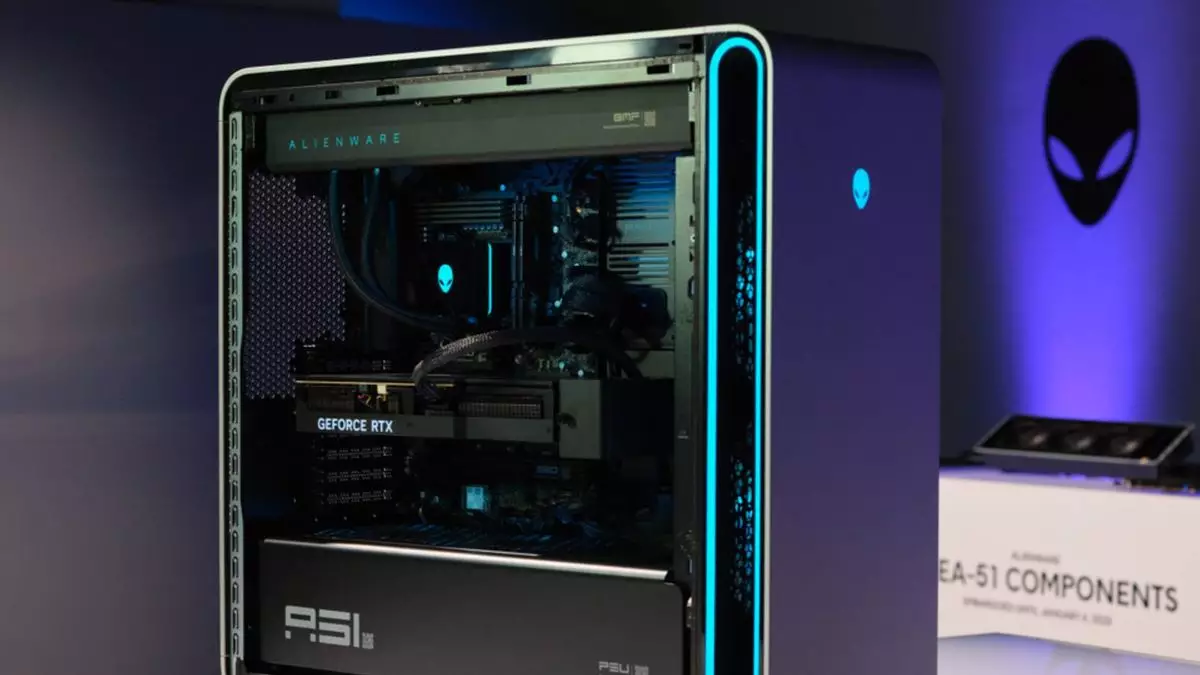The gaming world is often characterized by rapid advancements and fierce competition, prompting brands like Alienware to innovate relentlessly. During this year’s CES, Alienware’s introduction of the fully upgradeable Area-51 desktop was seen as a game-changer. This marked a significant pivot from their traditional ethos of producing stylish but notoriously limited upgrade paths. However, lurking beneath this exciting exterior was a caveat: achieving true upgradeability requires an additional expenditure of $35 for a conversion kit. This redundancy raises questions about Alienware’s commitment to genuine modularity in their rigs.
The Cost of Connectivity
At the heart of the controversy is the AlienFX board cable conversion kit, which for $35, ostensibly opens the doors to using third-party motherboards with the newly released Area-51 case. The kit includes a power switch wire, a fan power bridge, a USB extension dongle, and a mere bag of nuts—the bare necessities to transform your motherboard of choice into a compatible component. While it sounds harmless, bringing a financial burden for an upgrade path that should ideally be seamless is disconcerting. When users invest in a premium product, they expect comprehensive support and functionality without additional financial constraints.
Understanding the Limitations
Moreover, the kit’s compatibility is limited. Users opting for motherboards other than the ATX12VO type must invest in a new power supply. This adds another layer to the cost, making the idea of upgrading the rig a daunting financial commitment. For instance, should one own an earlier model like the R4, they will find themselves unable to utilize this upgrade option because the architectural changes are substantial. Therefore, while the Area-51’s latest iteration boasts impressive specs— reporting with robust performance metrics and enhanced thermal management—a significant portion of its allure is diluted by inconvenient restrictions imposed on upgrading the motherboard.
Impressive Specifications and Features
On a more positive note, the new Area-51 is visually stunning, perhaps even more so than its predecessors. With the latest RTX 50 series graphics cards, this rig promises a leap in performance, supported by a design focused on positive air pressure for superior cooling. Supposedly, it achieves cooler temperatures and quieter operation compared to prior models at a rate of 13% and 45% respectively. These features are commendable and enhance user experience, but even the most aesthetically pleasing and quiet rig pales if its upgradeability comes with financial strings attached.
The Appeal of Modular Design
This tug-of-war between aesthetic appeal and practical upgrade paths leaves consumers in a confusing position. While the upgrade options for GPU, RAM, and SSD components seem fairly straightforward and user-friendly, the convoluted motherboard scenario undermines the potential of an otherwise capable machine. Alienware should recognize that in today’s gaming culture, a modular design isn’t just a gimmick; it’s a philosophy that savvy gamers embrace. They expect to personalize and upgrade their rigs according to their evolving needs, without being bogged down by unforeseen costs.
A Step in the Right Direction?
There is some merit to Alienware’s latest endeavor, as any form of modularity is a step in the right direction. Still, it feels somewhat half-hearted when such potential is overshadowed by additional costs and limited compatibility. Instead of instilling a sense of empowerment through customization, users are left to grapple with financial considerations that dampen their upgrade passions. Alienware has inevitably made strides toward upgradeability, but when weighed against the backdrop of potential—and the limiting factors they introduced—it feels like they are taking two steps forward and one step back.
By rethinking their upgrade strategy, Alienware has the opportunity to create a product that embodies the true spirit of gaming: adaptability and freedom. For now, however, it seems they still have a long way to go in truly liberating their consumers from the constraints of pre-packaged features and limitations.

